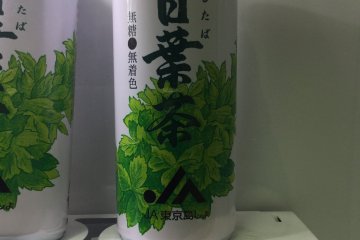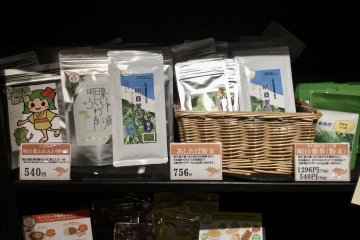I’m always ready for a culinary adventure in my travels in Japan, of which there are so many. When staying with Japanese hosts who extol the virtues of their local cuisine, I come to appreciate the way they prepare and serve it, and find them delicious despite the reputations some Japanese specialties have for curious textures, flavors, and presentations. One food I have had the opportunity to try is a rather pleasant and prolific one, ashitaba, a herb that is ubiquitous in southern Kanto region cooking.
Ashitaba literally means tomorrow leaf. This leafy green vegetable, related to carrots, parsley, and celery, and somewhat resembling the tops of those vegetables, is native to Chiba, Kanagawa, and Shizuoka Prefectures, and especially common in the Izu Islands south of Tokyo. It earns its name from its prodigious growth. If you harvest leaves very early in the day, by the next morning, new shoots are likely to appear. It’s a cold-hardy plant that has a long blooming period from May to October, and is easy to cultivate in pots and kitchen gardens. All parts of the plant, stalks, leaves, and roots, are incorporated into a wide variety of Izu Islands popular dishes. In the islands, you’ll find soba noodles, tempura, and pasta dishes made with ashitaba. It’s even made into ice cream and shochu liquor.
On my visit to Hachijojima Island, I savored many different ashitaba dishes. At a soba restaurant, I had a side of ashitaba tempura, a crunchy treat that has a flavor reminiscent of celery. Another meal I enjoyed presented ashitaba two ways. In one course, tempura vegetables were served with salt blended with powdered ashitaba, and in another, ashitaba and kusaya, pickled fish, were combined in a sauté. A surprise for me in a drink vending machine was canned ashitaba tea. It’s refreshing and has hints of carrot. A local café serves spicy tantanmen noodles with a garnish of dried ashitaba leaves. At the Jersey Café in the central part of Hachijojima you can try a parfait with a generous helping of ashitaba soft ice cream.
For souvenirs to bring home to my friends and family, I found ashitaba packaged ramen and fresh ashitaba soba. The culinary possibilities of ashitaba seem to have no bounds. If you’re in the Izu Islands, savor this aromatic vegetable in local cuisine.










